If you search for the “Atlanta Civil Rights Museum,” you’ll end up at the National Center for Civil and Human Rights. Right next to the popular World of Coca-Cola and the Georgia Aquarium, the National Center for Civil Rights should be just as high on your list of Atlanta sightseeing.
National Center for Civil & Human Rights
The National Center for Civil and Human Rights is a smaller museum, as far as civil rights museums go. Overall, I prefer the National Civil Rights Museum in Memphis, TN. But there are unique and important experiences and collections here that shouldn’t be missed. And some really cool, high-tech interfaces.
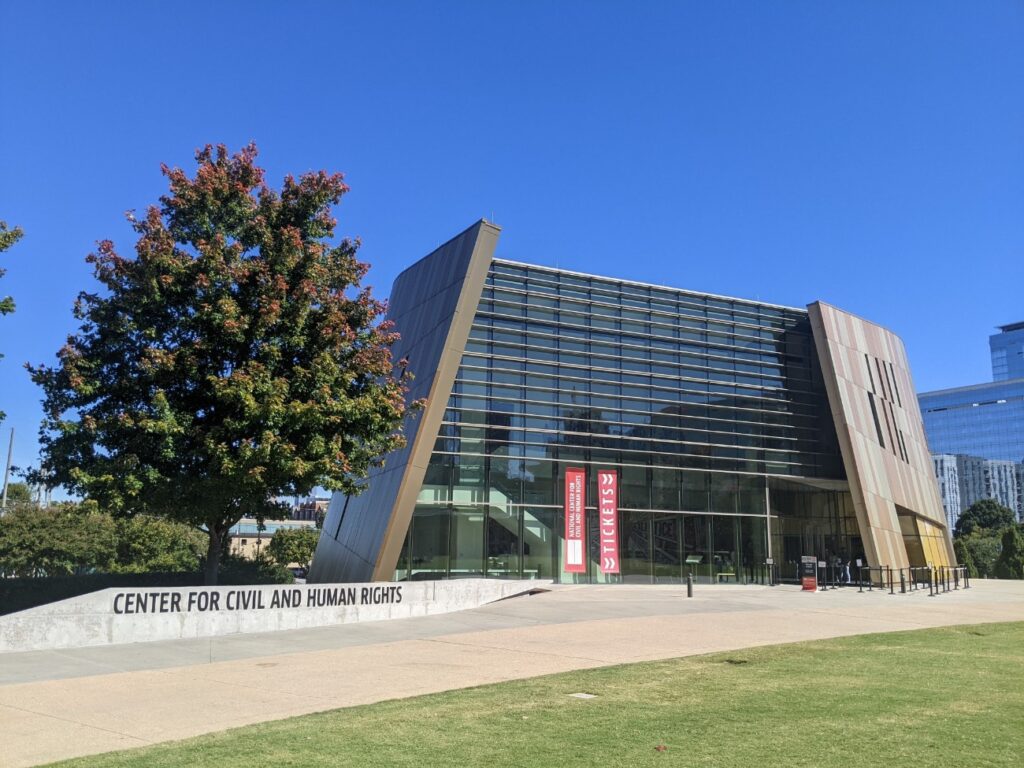
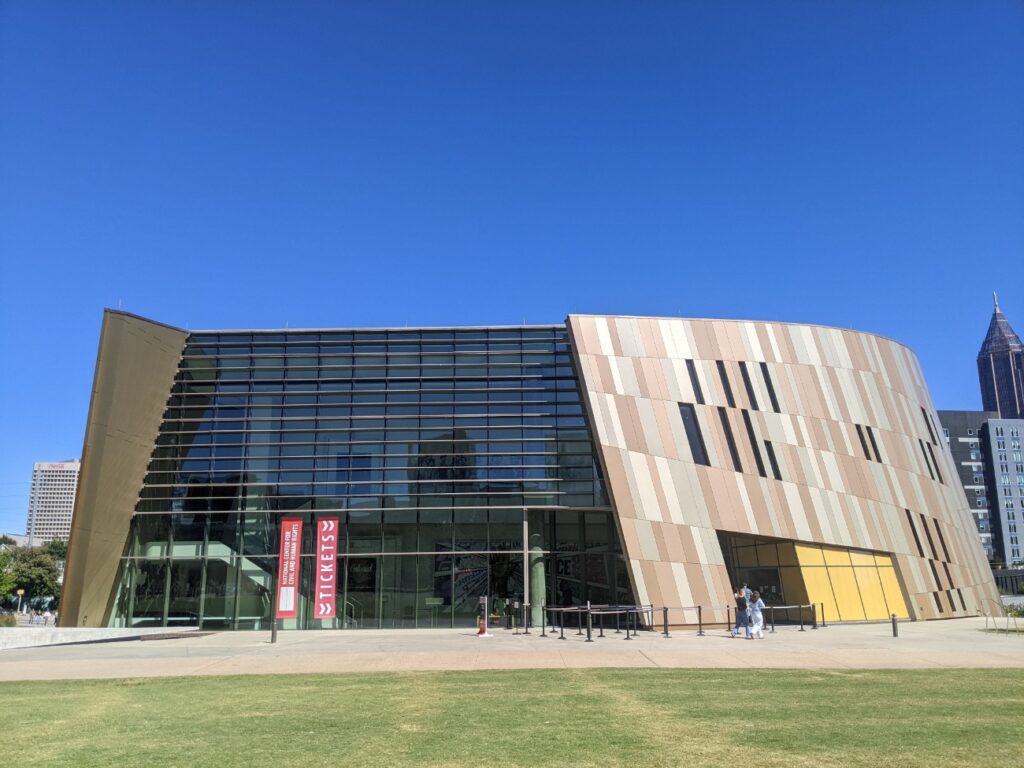
Entrance Level
Be sure to start your visit at the entrance level. This places you directly in Atlanta of the ’50s-’60s with music and stacks of televisions broadcasting news of the era. Step up to an antique TV and change the channel to see different news pieces. There are a lot of sound and video elements overall, which makes it pretty noisy. But once you step up to an element, it’s easier to focus on. As you move through the space, the scope widens from just Atlanta to the whole south, then the entire nation.
On this floor is the bulk of the experience, with timelines and photos depicting events and influences leading up to specific protests. There is a short lunch counter where you can sit and experience what it might have been like to participate in a sit-in. By putting headphones on and placing your hands on the counter, you can feel the shouts and the kicks of those who want to unseat you. On the opposite wall, a bus exterior is printed with mugshots of all the people who were arrested during the Freedom Riders bus protests.
A large screen in the next room presents videos from the March on Washington. Phone handsets on the wall allow you to listen to some of the speakers and music from that day. As you work your way toward the back, there are smaller rooms, stairs, and half floors that depict some of the retaliation against the protests, including the death of Dr. Martin Luther King, Jr. Reaching the top of the stairs, you come to a “requiem” gallery that honors those who died for human rights. Those portraits face a wall with the language of the laws that were finally passed due to their efforts.
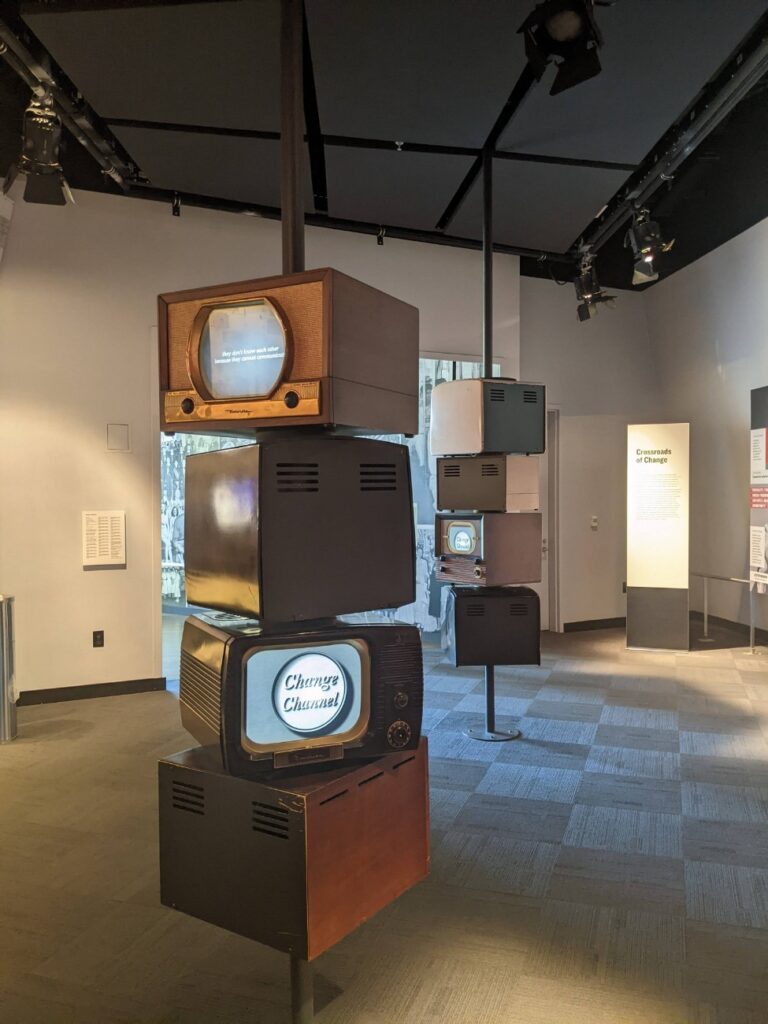
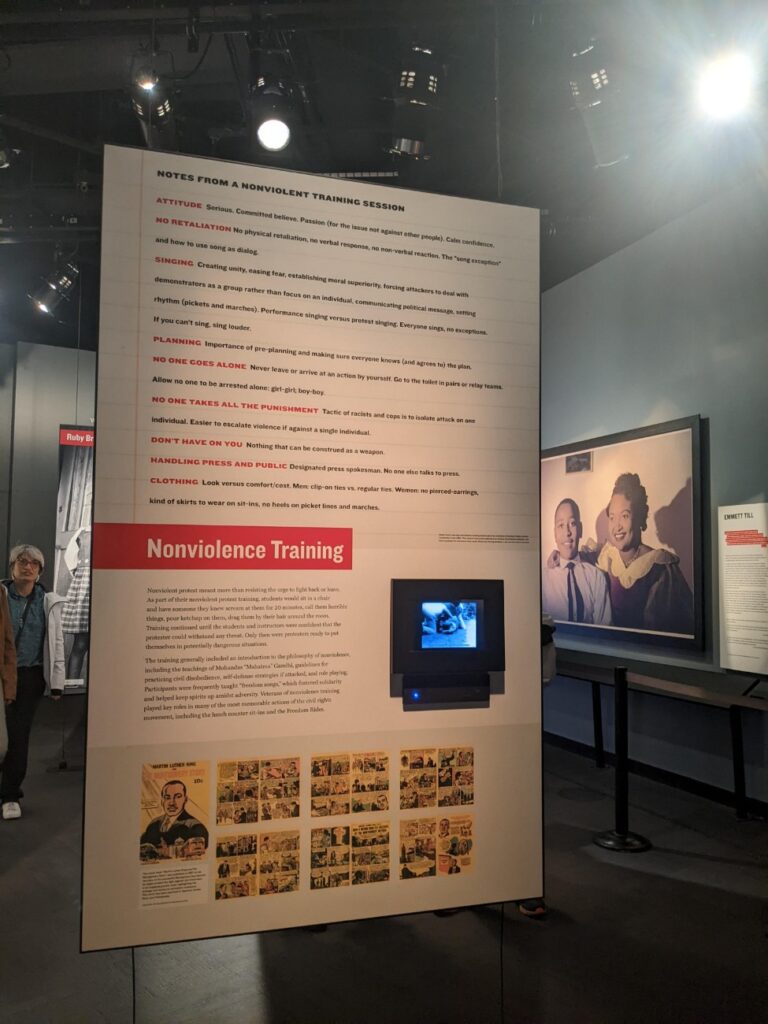
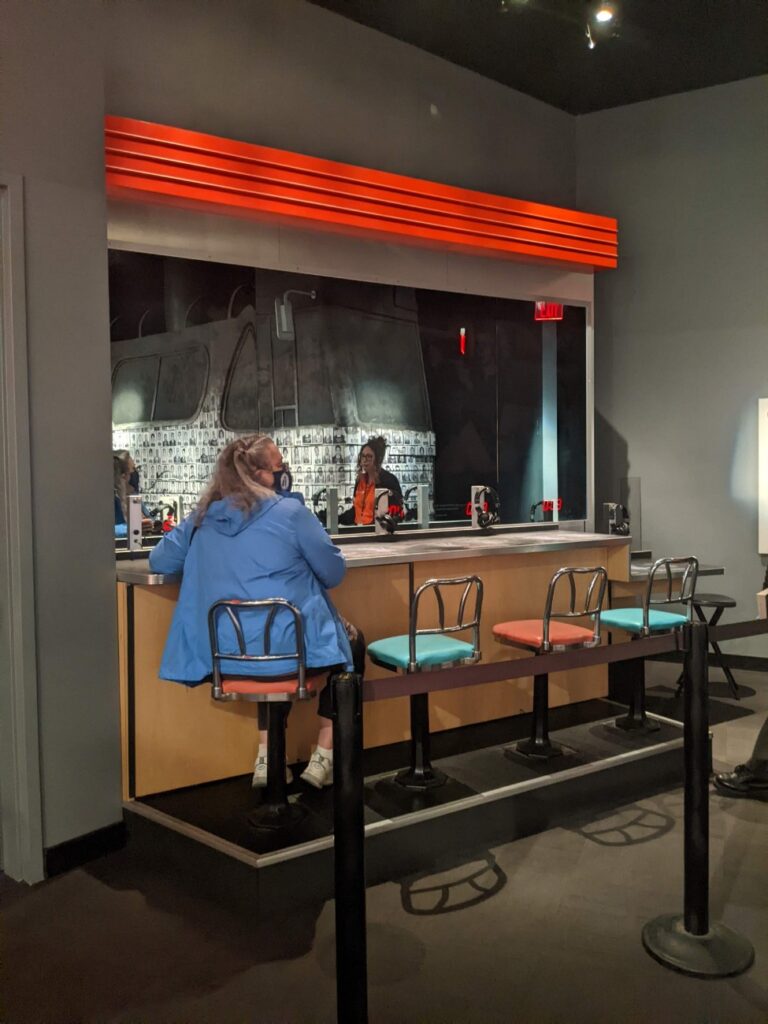
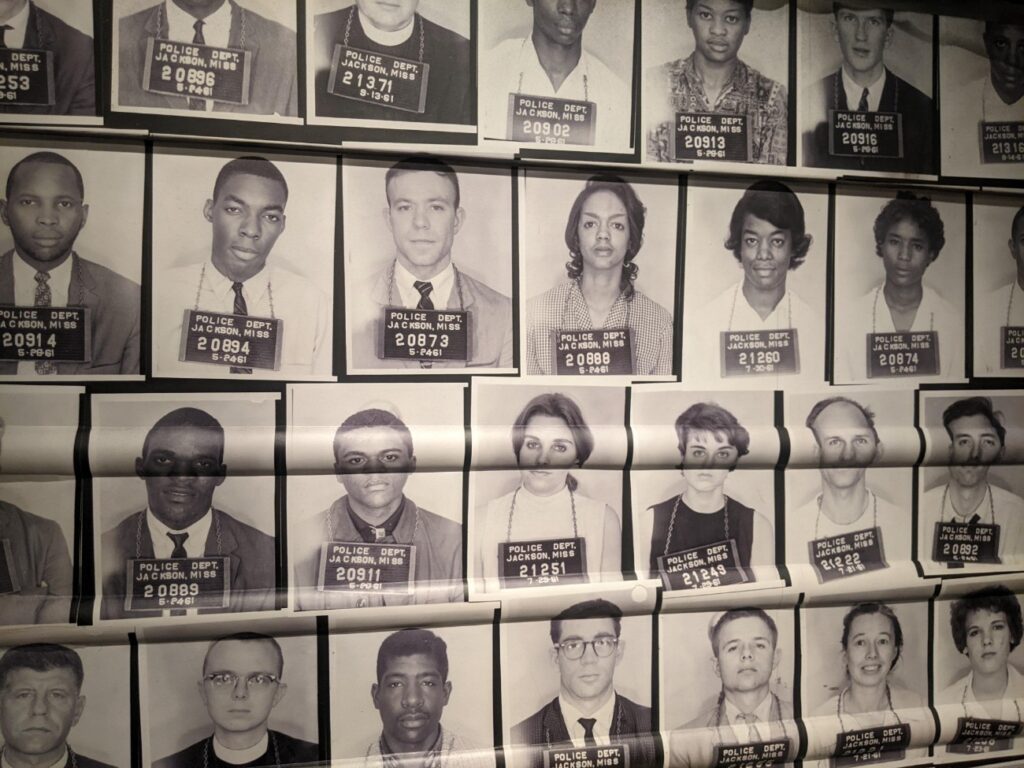
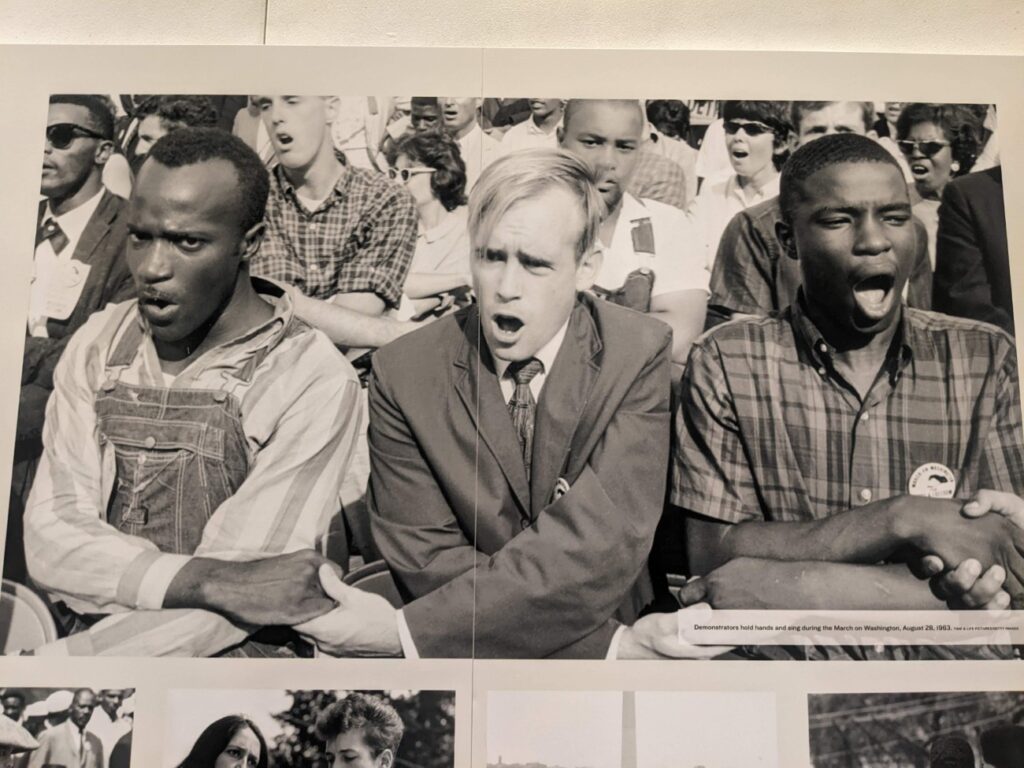
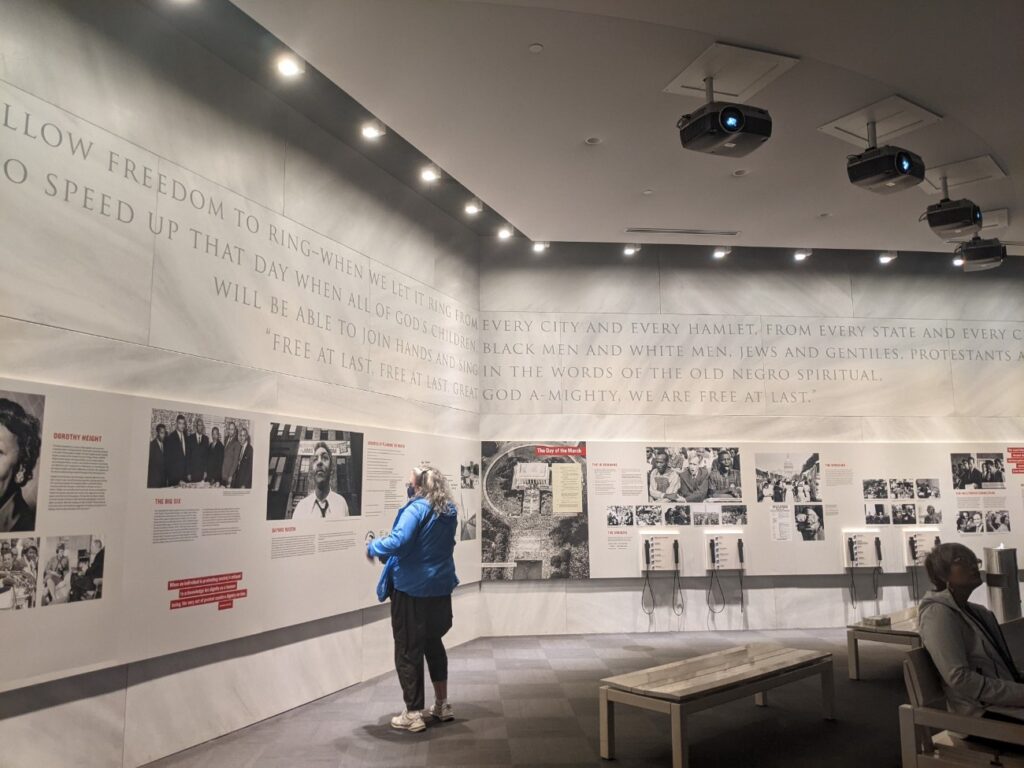
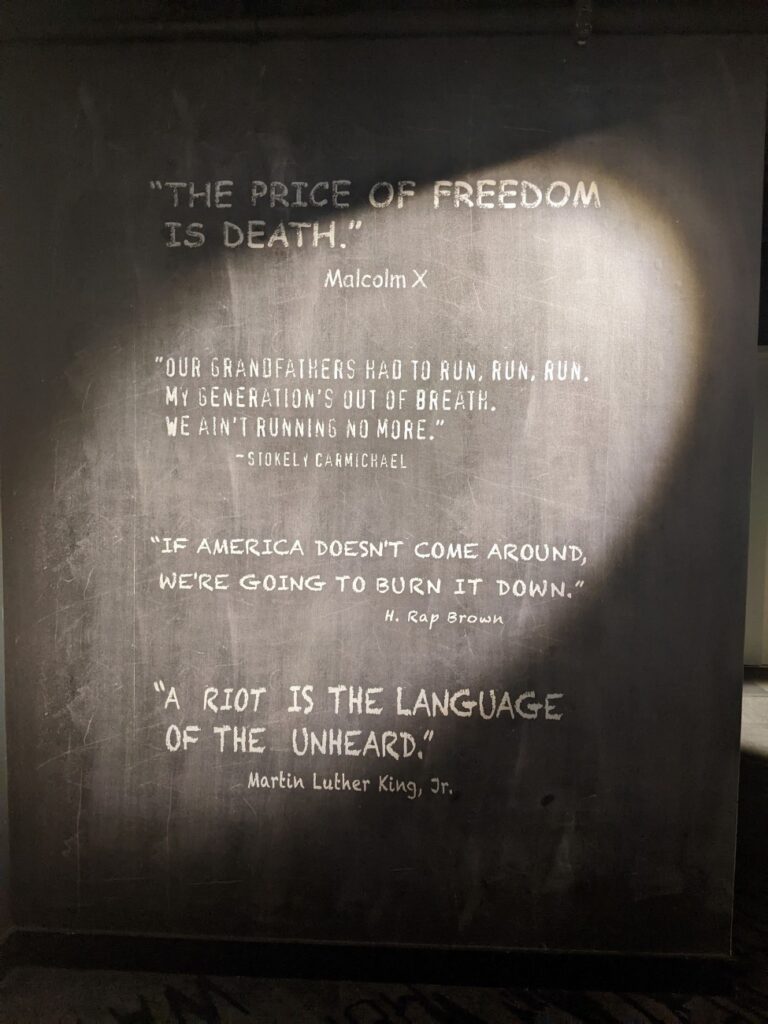
Upper Floor
Now that we’re on the top floor, the cause of human rights takes on a more international bent. This floor features galleries and videos of activists around the world, and some of the causes they care about. You can name-check some of the world’s worst human rights abusers. You can see how your purchases influence human rights issues. Cool video screens display activists as regular people and as if you were looking in a mirror. And a final round room has a dynamic installation of video screens celebrating what happens when we come together for a cause.
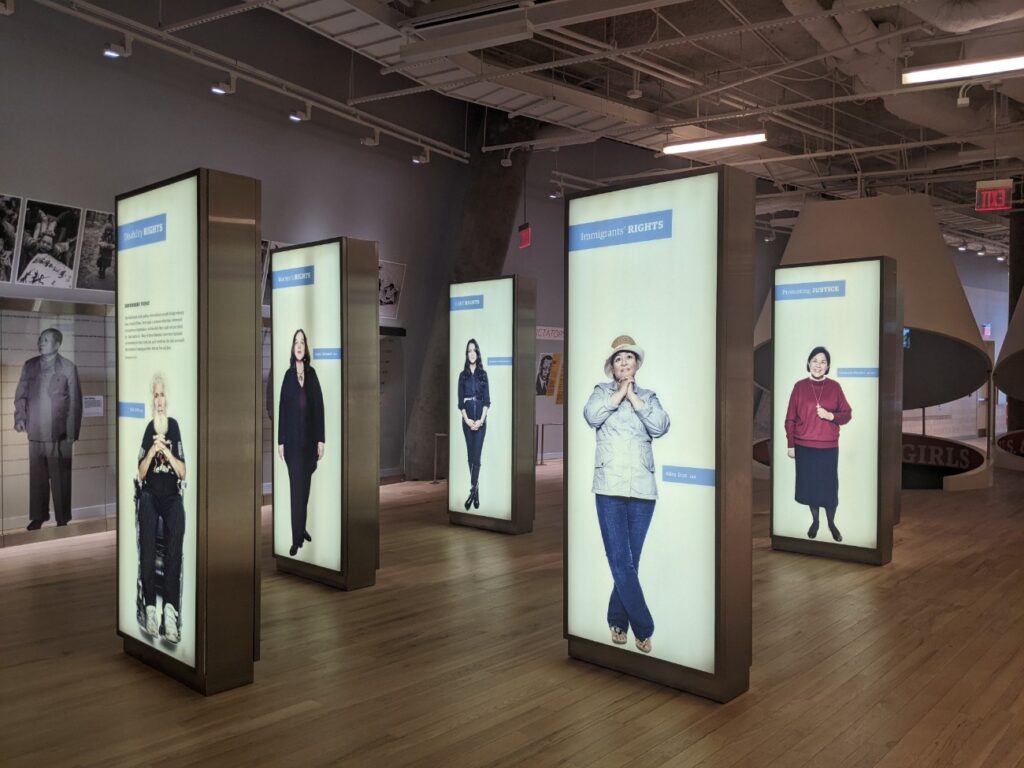

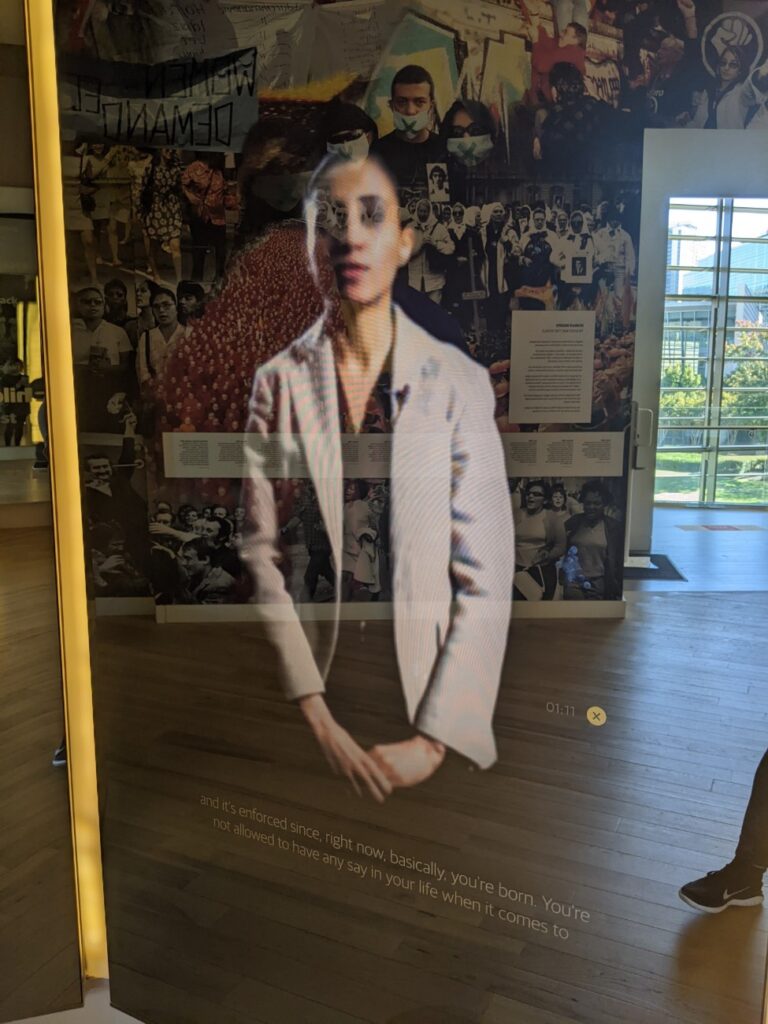
Lower Level
That’s the bulk of the experience, and many visitors will stop right there. But make sure to make your way down two floors to the lowest level. Down here, you find some of the most treasured items in the Center’s collection, a rotating exhibit of Dr. King’s actual papers and artifacts. Here you can see the actual letters King wrote to this or that organization, or pamphlets, flyers, or pins from various protests. I think this is the most important part of the whole building, but there didn’t seem to be many people down there to see it.
Considerations
There are a few things to keep in mind when visiting the National Center for Civil and Human Rights. First of all, there are a lot of stairs incorporated into the museum, especially at the back of the main floor. There are elevators, but if you’re using them, make sure to talk to someone first to make sure you see every gallery space. There’s an information desk right as you enter.
Also, the overlapping sounds could be overwhelming to anyone with sensory issues. I have trouble tuning out other noises, and I found it a little hard to focus sometimes. It’s cool, and a good use of technology. But it’s just overall noisy.
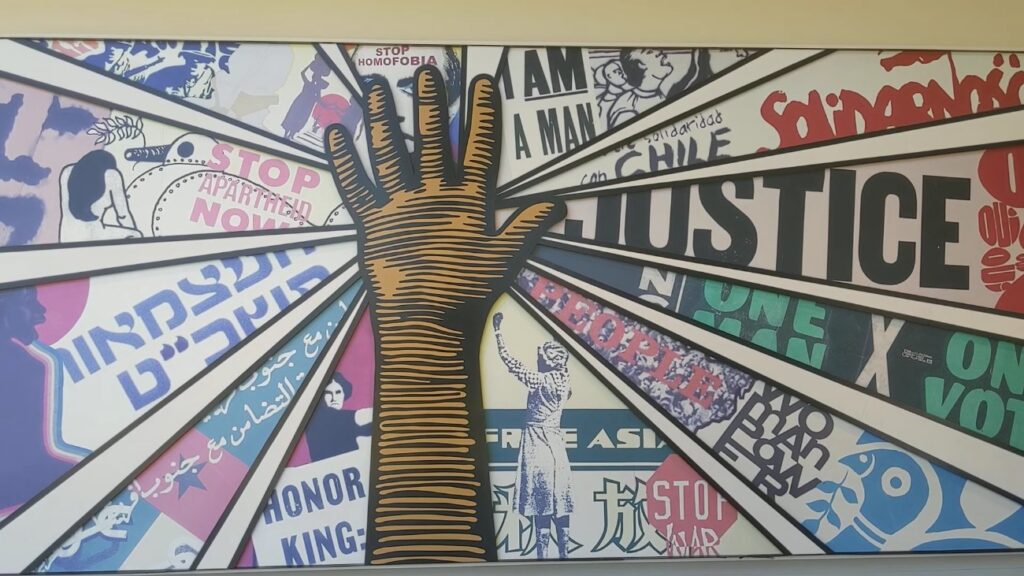
There are bathrooms and water fountains on every level. And there’s an event space on the lower level. I may have crashed a downstairs event during my visit. But I was a little determined to see everything, and I’m glad I did! I tried to exit from that floor, but they wouldn’t let me. Said that entrance was for “event attendees only,” which I think was their way of kicking me out of the party. I’m not sure if you can exit that way on a non-event day, but there is a neat large-scale sculpture on that side that I wasn’t able to photograph. (Or, didn’t quite bother to walk around the building for.)
Parking is relatively easy – use the Georgia Aquarium garage, and hang a left before you reach the aquarium entrance. The Center for Civil Rights is on your left. Or, park anywhere you can find nearby and walk in. Note that you can’t enter the Center from the street, which is the corner of Ivan Allen and Centennial Olympic Park Dr. You have to walk into the park and enter from the “lawn” side.
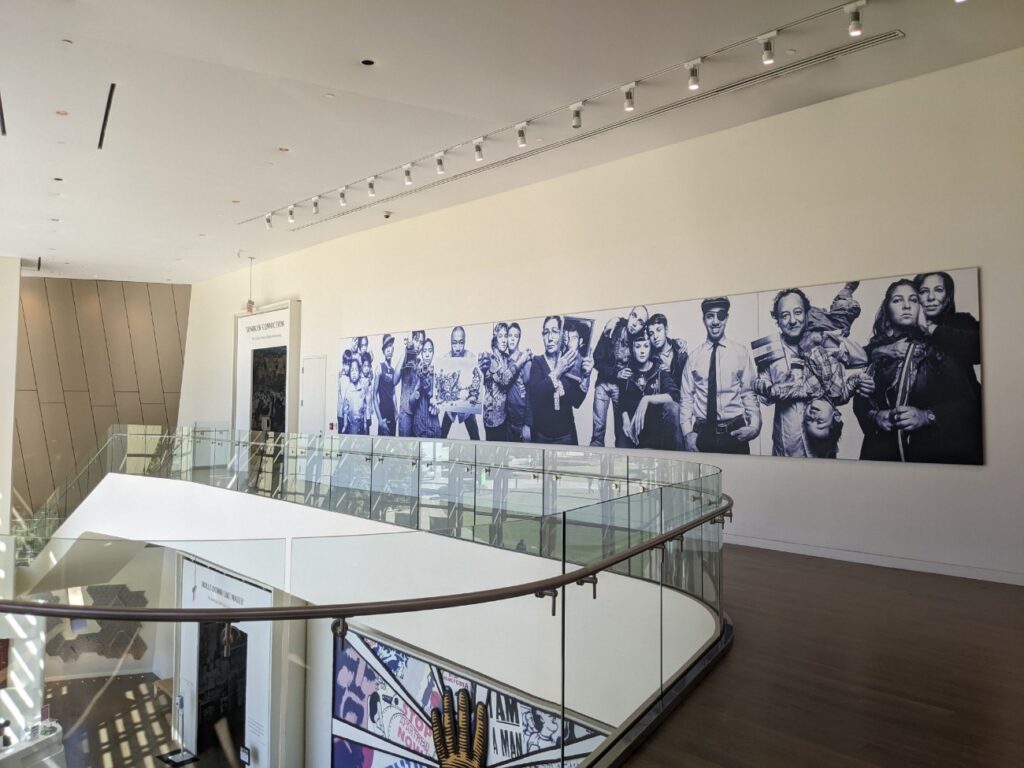
Admission & Hours
The National Center for Civil and Human Rights costs $20 for adults, $18 for seniors 65+, $16 for youth ages 7-12, and ages 6 and under are free. Purchase tickets online or at the window. There is a military discount, but only at the window (and they don’t say how much.) Family four-packs are $64, and if you have a group of 10 or more, contact groupsales@civilandhumanrights.org for pricing. Keep in mind that it also costs $17 to park at the aquarium.
The Center is open from noon-5 pm, with the last entry at 4 pm. Saturdays, they are open 10-5. They’re closed every Monday, though they were open for yesterday’s MLK day, so keep that in mind. The museum takes around two hours to tour completely, or a little less.
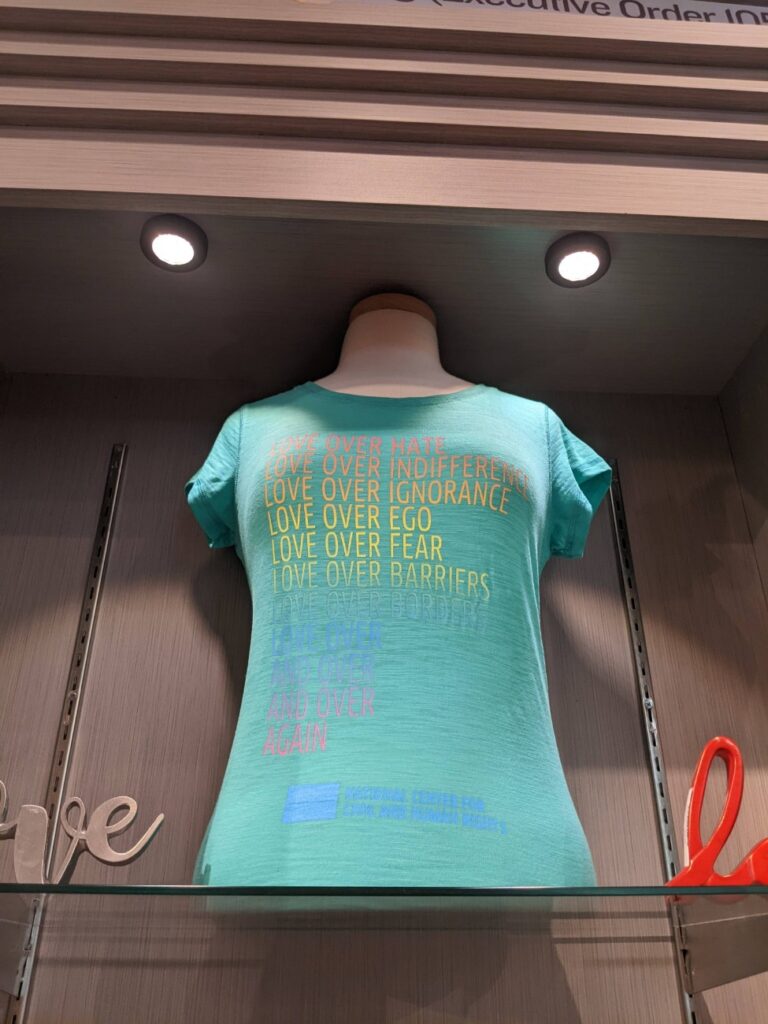
Making a Day of It
If you want to make a day of your visit to the area around the National Center for Civil and Human Rights, I recommend starting at the World of Coca-Cola at 10 am and touring until lunchtime, maybe at the nearby Bottle Cap Cafe (though it doesn’t get very good reviews.) Then the National Center for Civil and Human Rights to bring you down from all the Coke sugar. Then spend the rest of your afternoon at the Georgia Aquarium to soothe any jangled or saddened nerves from your walk through civil rights history. The aquarium is open later, usually until 6 or 9 pm, and they have a cafe inside if you want more tourist food for dinner.
If not, there are a fair amount of restaurants on the entire price spectrum within decent walking distance. If you angle your dinner toward the opposite side of Centennial Olympic Park, you can fit in a ride on Atlanta’s Ferris wheel, the Skyview Atlanta, and maybe see the sunset if you’re lucky. It’d be an expensive day: $20-World of Coke + $20 for Civil Rights + $50-aquarium + $15-Ferris wheel = over $100 per person plus parking and food, but it might be fun to have a Big Day and knock it all out at once!
However you do it, you should make a visit to the National Center for Civil and Human Rights part of your Atlanta trip, it’s well worth it.
Be First to Comment